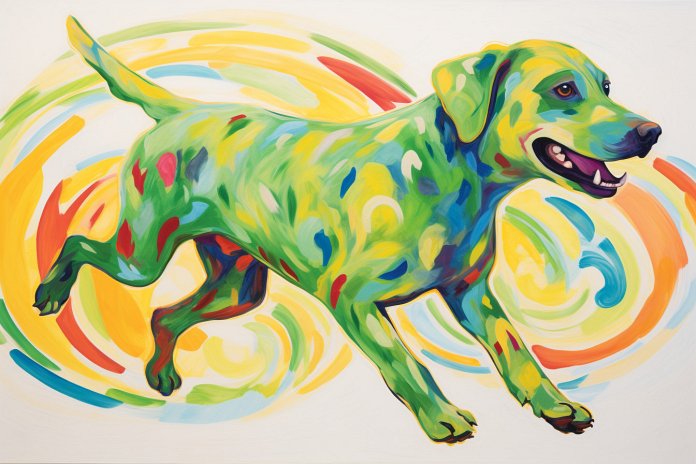
Your dog’s tail is an important part of their identity and can reveal a lot about their personality and mood. In this article, we will explore how a dog uses and feels their tail, the different positions and movements of a tail, and the history and science behind tail wagging. Additionally, we will discuss how to interpret your dog’s body language through their tail and the importance of understanding their communication.
Signs of a Dog Using & Feeling Their Tail
A dog uses their tail to communicate with you and other dogs. Different tail positions indicate different emotions. A wagging tail is commonly associated with happiness, but it can also indicate a willingness to interact. A high and upright tail signifies confidence, while wagging to the right suggests happiness and positivity. Wagging to the left indicates fear and apprehension, especially if the tail is stiff. Tucking their tail signals a desire for safety and protection.
Body Language
In addition to tail movements, other body language signs can indicate your dog’s communication:
– Wagging the tail with the whole backend moving side to side suggests extreme happiness.
– A low tail carriage implies a submissive or submissive-aggressive state.
– Tail tucking demonstrates fear and discomfort.
– A tail held up indicates alertness and engagement.
– A stiff tail can signify tension or aggression.
Other Signs
Other signs of tail communication may include butt and tail wiggling, wagging to the left when anxious, and wagging to the right when happy.
History of Dogs and Their Tails
Tail wagging in dogs evolved from their ancestors, wild dogs and wolves, as a way to communicate within their pack. Over time, tail wagging became more complex and exaggerated. Some dogs developed longer and fluffier tails to enhance visibility, while others developed color variations for contrast. Tail wagging also releases special pheromones for scent-based communication.
Science Behind a Dog’s Tail
A dog’s tail consists of moveable vertebrae surrounded by muscles, allowing for a wide range of movements. The tail is filled with nerves and tendons, enabling dogs to feel sensation. Stepping on a dog’s tail can cause pain due to these nerves.
Training a Dog to Wag Their Tail
You cannot train a dog to wag their tail as it is an innate behavior. Instead, focus on understanding your dog’s tail communication. Observe their body language, tail movements, and reactions in various situations. Recognize signs of aggression or fear to ensure their safety.
Conclusion
A dog’s tail is a vital means of communication, reflecting their emotions and intentions. Understanding your dog’s tail language is essential for effective communication and a stronger bond between you and your furry friend.
“Your dog’s tail is their voice, expressing emotions and communicating with the world.”

Tips & Things to Know
1️⃣ Pay attention to your dog’s tail movements and positions to understand their emotions and mood. Different tail positions indicate different emotions, such as happiness, confidence, fear, or aggression.
2️⃣ Recognize the signs of communication through your dog’s tail, such as wagging to the right indicating happiness, wagging to the left indicating anxiety, and tucking their tail to protect themselves from perceived threats.
3️⃣ Understand the importance of a dog’s tail in their communication with you and other dogs. Tail wagging evolved as a way for dogs to communicate with their pack, and today they use it to communicate with humans and other dogs. It is not something you can train your dog to do or not do, but you can train yourself to interpret their tail movements and understand their emotions better.
Frequently Asked Questions, Answered ✅
1. Can dogs feel their tails?
– Yes, dogs can feel their tails as they are filled with nerves and tendons.
2. How can you tell a dog’s mood based on their tail?
– Different tail positions and movements can indicate different emotions. For example, a wagging tail is often associated with happiness, while a tucked tail signifies fear or apprehension.
3. How do dogs use their tails to communicate?
– Dogs use their tails to communicate with both humans and other dogs. Tail wagging, position (upright or lowered), and direction of wag (left or right) can convey different messages.
4. What is the structure of a dog’s tail?
– A dog’s tail is made up of moveable vertebrae, surrounded by muscles, nerves, and tendons. It has a large range of movement and can be held up, wagged from side to side, or tucked between the legs.
5. Can you train a dog to wag their tail?
– No, tail wagging is a natural behavior for dogs and cannot be trained. However, you can train yourself to understand and interpret your dog’s tail movements and body language.